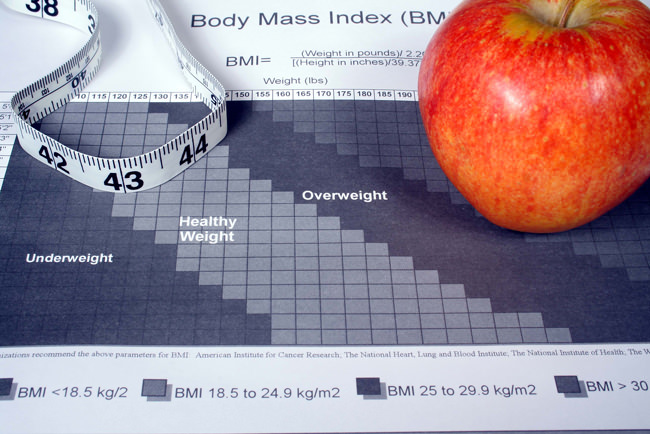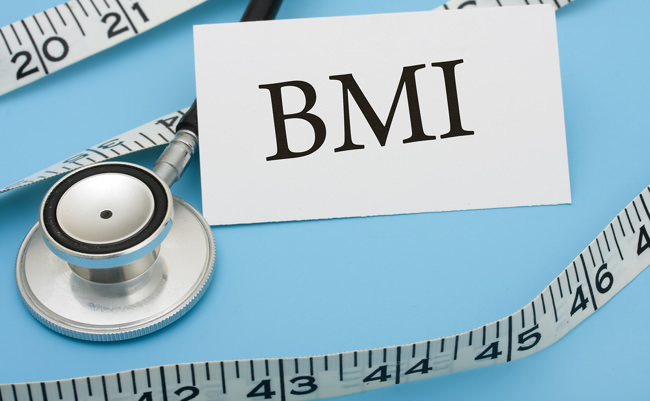
There are several characteristics used by health professionals to help determine the general health of an individual. A person’s weight, height, age, percentage of body fat compared to muscle in the body, exercise habits, family history and diet all play critical roles in determining how healthy a woman is. An important factor to consider is the Body Mass Index (BMI) of the individual, which utilizes a woman’s body weight, height and actual fat content to calculate the BMI.
Body Mass Index can be calculated in three easy steps:
- First, multiply the individual’s weight in pounds by 703. The significance of using the number 703 during the calculation is the original BMI formula was calculated using the metric system. This step will enable an individual to convert these numbers from metric to the English numerical system.
- Second, divide the result by the person’s height in inches.
- Third, divide the result from Step 2 by the height in inches one more time.
The final result will allow a woman to determine if she is underweight, normal weight, overweight or obese. The categories are split in this manner:
- Underweight = less than 18.5%
- Normal Weight = 18.5%-24.9%
- Overweight = 25%-29.9%
- Obese = 30% and higher
The categories of “overweight” and “obese” can offer some confusion. Overweight indicates that an individual has an excess of body weight. This does not automatically indicate body fat. However, obesity is a definite sign of a high percentage of actual body fat.
Women also need to realize that there are some factors that could change the BMI result in a manner that will not determine a true result. For example, athletes and bodybuilders could have a higher BMI due to the person’s muscular build. On the other end of the spectrum a lower BMI could be calculated in an older individual or one that has lost muscle mass over time.
However, generally speaking a high BMI could indicate potential health risks for the individual, particularly heart related issues. This is according to the National Heart, Lung and Blood Institute. If an individual has a high BMI there are several things that can be done to lower that figure and feel better in the process. First, create a healthier diet that effectively balances carbohydrates and proteins while eliminating the fat. Second, develop an exercise program that can be followed on a consistent basis. It makes more sense to ease into the process and experience success rather than trying to do too much too soon and become discouraged if there are stumbling blocks along the way.
Women are advised to see their doctor before making any dramatic changes to their diet and exercise routine to ensure the change will promote a safe environment and create success. It is never too late to change one’s lifestyle and commence a healthier way of living!




Be the first to comment